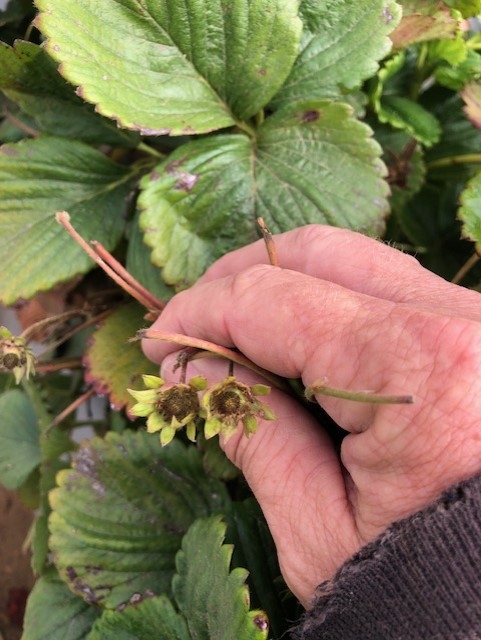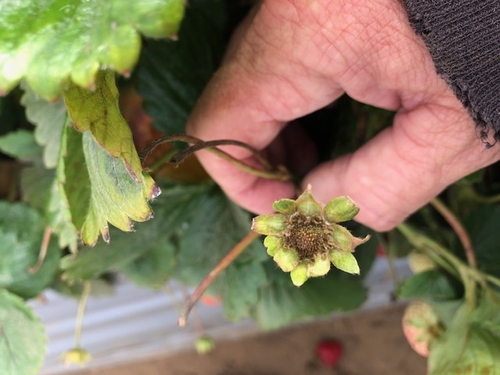Flower abortion in Central Coast Strawberries
There have been many, many questions over the past few weeks about why so many strawberry flowers are aborting in addition to a noticeable uptick in crooked, mis-shapen fruit. So, while I cannot present any empirical evidence as to why more strawberry flowers than usual are failing, in the interest of offering information that could be helpful I can share some of my own hypotheses.
There are several reasons for the failed flowers, better known by growers and crop managers as aborted fruit or duds. These aborted flowers are flowers with blackened centers (see the photos attached below) which are the dead floral reproductive parts and subsequently will no longer make as a fruit. Most commonly this is the result of extended period of very high temperatures (roughly above 90o F) or, for certain varieties, the higher ultraviolet radiation (UV) of the longest days of the year at the end of June.
This past year has been different since we have not had very hot days so far and it has been often quite cloudy or foggy all the while that there has been a remarkable amount of fruit loss attributable to aborted flowers and mis-shaping. This indicates a different reason than the excessive heat or UV radiation described above, and from the situations of failed flowers that have been shared with me I am thinking there is a weakening of the plant from a lack of nitrogen nutrition at cause here. In addition to plants which appear less green, tissue samples that I have seen associated with failing flowers have had leaf blade nitrogen under the recommended 2.5%, and soil nitrates under the 10 ppm (sometimes even at 1 or 2 ppm) which is often seen as a minimum for good strawberry plant performance.
I am certain that these low levels of nitrogen in the soil and the plant clearly have a direct relation to the leaching effects of the heavy rains and flooding of this past winter. What's more, this would account for the description many growers and industry personnel share with me of “tired” or “worn out” plants with light green leaves, a lack of vigor and little of the bright green leaf luster that we all associate with a strong and healthy plant.
In turn, the call for additional nitrogen to correct these deficiencies would not be a bad one, and could very well minimize the amount of flower abortion as well.

A look at a couple of failed flowers, note burnt out appearance of floral parts.

A closer look at an aborted flower.


Posted by Hillary Thomas on August 1, 2023 at 10:01 AM